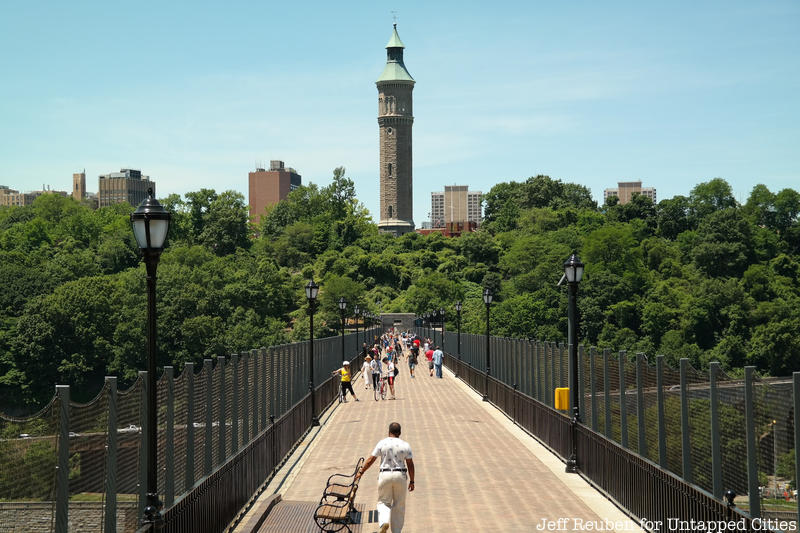3. High Bridge

In 1848, High Bridge, the oldest surviving bridge in New York City was built to bring water to the burgeoning city of New York. Aside from transporting water, the bridge connected the metropolitan borough of Manhattan to the lush rural area of the Bronx, so that both city dwellers and those who lived in the country could easily travel back and forth. After being closed for over forty years, the bridge, built in the style of ancient Roman aqueducts, was opened to pedestrians in the summer of 2015.
When High Bridge was used for water delivery from upstate to New York City, 90 million gallons of water were being transported from the Croton Reservoir to New York City. To improve navigability across the Hudson River and because the masonry was considered hazardous to ships by the United States Army Corps of Engineers, the five original stone arches were removed in 1928 and replaced by a single steel arch. At this time, there was a possibility that the bridge would be torn down entirely, as Manhattan now had access to other means of water including water from the Catskill region, which was funded by the Board of Water Supply in the early 1900s. Ultimately, the bridge was preserved but the water was rerouted. As Justin Davidson notes in Magnetic City, “on the walkway, the two sections [of the bridge] are demarcated by different patterns of pavers.”





